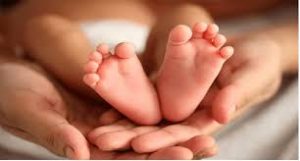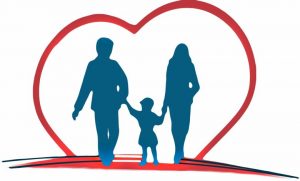Daily Current Affairs for Government Exams:
Today Current Affairs: 16th October 2020 for UPSC IAS exams, State PSC exams, SSC CGL, State SSC, RRB, Railways, Banking Exam & IBPS, etc
Table of Contents
Contents:
- India’s first ‘saviour sibling’ experiment.:
- Law On Domestic Violence:
- Saral Jeevan Bima:
- Gurkha Rights in Assam:
- Right of Passage of the Animals:
- National Authority for Recycling of Ships :
- Chapter proceedings:
- Other important current affairs:
1.India’s first ‘saviour sibling’ experiment.:

Doctors successfully conducted India’s first ‘saviour sibling’ experiment.
- The Saviour Sibling named Kavya saved her 6-year-old brother (suffering from Thalassemia).
- 150- 200 ml bone marrow was harvested from Kavya in an hour-long procedure and then given to her brother Abhijeet through transfusion.
- Kavya suffered low haemoglobin for some time but it was corrected with supplements and she also endured some pain in the areas from where the marrow was taken for a few days. Presently, both Kavya and Abhijeet are healthy.
‘Saviour Sibling’ :
- Refers to babies that are created to serve an older sibling as a donor of organs, bone marrow or cells.
- Stem cells from the umbilical cord blood or blood of the saviour sibling are used for the treatment of serious blood disorders like thalassemia, sickle cell anaemia.
- They are created with In vitro fertilisation (IVF) so that they can undergo pre-implantation genetic diagnosis (or testing) to rule out any genetic disorders and also check bone marrow compatibility.
- Pre-implantation Genetic Testing (PGT) refers to the genetic profiling of embryos. It is used to screen embryos for genetic diseases or chromosomal abnormalities.
- From each embryo, PGT takes a biopsy of only a few cells and conducts a genetic analysis.
- This analysis can search to exclude embryos carrying a genetic variant that causes a hereditary disease, and it can search to find embryos that are an Human Leukocyte Antigen (HLA) match to a sibling.
- HLA is a type of molecule found on the surface of most cells in the body. These play an important part in the body’s immune response to foreign substances.
- These make up a person’s tissue type, which varies from person to person.
- HLA typing is important in organ transplantation protocols, as they determine the likelihood of rejection.
- The world’s first saviour sibling, Adam Nash, was born in 2000 in the USA.
2.Law On Domestic Violence:

The Supreme Court recently delivered a judgement in which it held that the relief granting right to residence to a married woman under the domestic violence law by a criminal court is “relevant” and can be considered even in civil proceedings seeking her eviction from the matrimonial home.
- Alongside, the Court termed the 2005 law on the protection of women from domestic violence as a “milestone”
Important observations made by the Court:
- Despite the 2005 law, offences against women is “rampant” in this country and they face “violence in some form or the other on almost every day”.
- A woman resigns her fate to the never-ending cycle of enduring violence and discrimination as a daughter, a sister, a wife, a mother, a partner or a single woman in her lifetime.
- Non-retaliation by women against violence, coupled with the absence of laws addressing women’s issues, ignorance of the existing laws enacted for them and societal attitude makes them vulnerable.
The Protection of Women from Domestic Violence Act 2005:
- It is an act to provide for more effective protection of the rights of women guaranteed under the Constitution who are victims of violence of any kind occurring within the family and for matters connected therewith or incidental thereto.
- It is the first significant attempt in India to recognise domestic abuse as a punishable offence, to extend its provisions to those in live-in relationships, and to provide for emergency relief for the victims, in addition to legal recourse.
3.Saral Jeevan Bima:

It is a standard individual term life insurance product unveiled recently by the Insurance Regulatory and Development Authority (IRDAI).
- This will help customers make an informed choice and reduce mis-spelling.
- All life insurers will have to offer the standard product by January 1, 2021.
Key features of the product- Saral Jeevan Bima:
- It will be a non-linked, non-participating individual pure risk premium life insurance plan providing for payment of the sum assured in lump sum to the nominee in case of the insured’s death during the policy term.
- The plan will be for those in the 18-65 years age group.
Policy term will be 5-40 years. - It allows for a maximum maturity age of 70 years.
- Sum assured will be a minimum of ₹5 lakh and a maximum of ₹25 lakh. Insurers, however, have the option of offering sum assured beyond ₹25 lakh with all other terms and conditions remaining the same.
- The product shall be offered to individuals without restrictions on gender, place of residence, travel, occupation or educational qualifications.
- There will be only one exclusion under the policy – exclusion for suicide.
- There will be no maturity benefit. Neither will there be any surrender value nor can any loan be taken against the product.
- The policy will also offer optional Accident Benefit and Permanent Disability Rider.
4.Gurkha Rights in Assam:

The Gurkha community in Assam has sought gazette notification ensuring that the safeguards according to Clause 6 of the 1985 Assam Accord are also extended to Gurkha people of Assam.
- The demand for the safeguards by Gurkha community further intensified with the recommendations of the high-level committee formed under the Chairmanship of Biplab Kumar Sharma by the Union Home Ministry on Clause 6 of Assam Accord.
- The committee recommended that all Gurkhas of Assam are not indigenous Assamese people as per the definition of Assamese people.
- Clause 6 of the Accord envisages constitutional, legislative and administrative safeguards for protecting, preserving and promoting the culture, social, linguistic identity and heritage of the Assamese people.
Biplab Kumar Sharma Committee Recommendation:
- The report proposes 1st January 1951 as the cut-off date for any Indian citizen residing in Assam to be defined as an Assamese for the purpose of implementing Clause 6.
- It seeks reservation for Assamese in Parliament, state assembly, local bodies.
- It recommended creating an Upper House (Legislative Council of Assam) whose seats will be reserved for the ‘Assamese people’.
- The report also seeks quotas in government jobs.
- Regulation of Outsiders: Recommends regulation of entry of people from other states into Assam, which includes the implementation of an Inner Line Permit (ILP) regime in the state.
- The ILP is a system in which a special permit is required by people from other regions of India to visit the state.
- Currently, the ILP is applicable in Manipur, Arunachal Pradesh, Nagaland and Mizoram.
Assam Accord
- It was a tripartite accord signed between the Government of India, State Government of Assam and the leaders of the Assam Movement in 1985.
- The Accord ended the anti-foreigner Assam Agitation from 1979-1985.
- The signing of the Accord led to the conclusion of a six-year agitation that was launched by the All Assam Students’ Union (AASU) in 1979, demanding the identification and deportation of illegal immigrants from Assam.
- It sets a cut-off of midnight of 24th March 1971, for the detection of illegal foreigners in Assam.
- However, the demand was for detection and deportation of migrants who had illegally entered Assam after 1951.
4.Right of Passage of the Animals:

The Supreme Court (SC) upheld the 2011 order of the Madras High Court (HC) on the Nilgiris elephant corridor, affirming the right of passage of the animals and the closure of resorts in the area.
Madras HC Judgement:
- In 2011, the Madras HC upheld the validity of the Tamil Nadu government’s notification (of 2010) declaring an ‘Elephant Corridor’ in the Sigur Plateau of Nilgiris District.
- It said that the government is fully empowered under the ‘Project Elephant’ of the Union government as well as
- Article 51 A(g) of the Constitution to notify the elephant corridor in the state’s Nilgiris district.
- Article 51 A(g): It shall be the duty of every citizen of India to protect and improve the natural environment including forests, lakes, rivers and wildlife and to have compassion for living creatures.
- Further, it upheld directions to the resort owners and other private landowners to vacate lands falling within the notified elephant corridor.
Highlights of the SC Judgement:
- It’s the State’s duty to protect a “keystone species” like elephants, which are immensely important to the environment.
- Keystone species, in ecology, a species that has a disproportionately large effect on the communities in which it lives.
- Elephant corridors allow elephants to continue their nomadic mode of survival, despite shrinking forest cover, by facilitating travel between distinct forest habitats.
- These corridors play a crucial role in sustaining wildlife by reducing the impact of habitat isolation.
- The court also allowed the formation of a committee led by a retired HC judge and two other persons to hear the individual objections of resort owners and private landowners within the corridor space.
- However, during the hearings, the SC opined that the area is a fragile ecosystem, where the will of men must give way to elephants.
Nilgiris Elephant Corridor:
- The corridor is situated in the ecologically fragile Sigur plateau, which connects the Western and the Eastern Ghats and sustains elephant populations and their genetic diversity.
- It is situated near the Mudumalai National Park in the Nilgiris district.
- It has the Nilgiri hills on its southwestern side and the Moyar river valley on its northeastern side.
- There are about 100 elephant corridors in India of which almost 70% are used regularly.
- 75% of the corridors are in the southern, central and northeastern forests.
- There are an estimated 6,500 elephants in just the Brahmagiri-Nilgiris-Eastern Ghats ranges.
‘Right of Passage’, an 800-page study released in August 2017, authored by experts and published by the Wildlife Trust of India (WTI) identifies and records details pertaining to 101 elephant corridors across India.
5.National Authority for Recycling of Ships :

Central Government has notified the Directorate General of Shipping as National Authority for Recycling of Ships under section 3 of the Recycling of Ships Act, 2019.
- As an apex body, DG Shipping is authorised to administer, supervise and monitor all activities relating to ship recycling. DG Shipping will be the final authority for the various approvals required by the Ship-Recycling yard owners and State Governments.
- Under Ship Recycling Act, 2019, India has acceded to Hong Kong Convention for Ship Recycling under International Maritime Organization (IMO). DG Shipping is a representative of India in IMO and all the conventions of IMO are being enforced by DG Shipping.
- National Authority of Ship Recycling will be set up in Gandhinagar, Gujarat.
- The location of the office will benefit the Ship Recycling yard owners situated in Alang, Gujarat which is home to Asia’s largest ship breaking and ship recycling industry in the world.
6.Chapter proceedings:

The Mumbai police last week began “chapter proceedings” against Republic Editor-in-Chief Arnab Goswami.
Chapter proceedings:
- They are preventive actions taken by the police if they fear that a particular person is likely to create trouble and disrupt the peace in society.
- Here, the police can issue notices under sections of the Code of Criminal Procedure to ensure that the person is aware that creating nuisance could result in action against him, which includes paying a fine, in the absence of which, he could be put behind bars.
- A notice is issued to a person under section 111 of the CrPC whereby he is asked to present himself before the Executive Magistrate – an ACP-rank officer in a commissioner of a deputy collector in rural areas – who has issued the notice.
- The person has to explain why he should not be made to sign a bond of good behaviour.
- If the Executive Magistrate is not satisfied with the answer, the person is asked to sign a bond of good behaviour and produce sureties vouching for his/her good behaviour.
- A fine amount is also decided – in accordance with the crime and the person’s financial capability – which the person would have to pay if he violates the conditions set in the bond.
Other important current affairs:
1.Union Education Minister launched the ‘KAPILA’ (Kalam Program for Intellectual Property Literacy and Awareness) campaign on the 89th birth anniversary of former President and Scientist Late Dr. APJ Abdul Kalam.
- Under this campaign, students pursuing education in higher educational institutions will get information about the correct system of application process for patenting their invention and they will be aware of their rights.
- The Institution Innovation Council (IIC 2.0) annual report was also presented on the occasion and the launch of IIC 3.0 was announced. It has also been decided to celebrate the week of October 15th to 23rd as ‘Intellectual Property Literacy Week’. The IIC 3.0 website was also launched.
- The Institution Innovation Council was established by the Ministry of Education in 2018. So far, IICs have been established in about 1700 higher educational institutions.
- IIC will be established in 5000 higher educational institutions under IIC 3.0.
2.The year 2020 marks the 65th anniversary of the landmark Bandung Conference that resulted in the adoption of the founding principles of the Non-Aligned Movement (NAM).
- The basic concept for NAM originated in 1955 during discussions that took place at the Asia-Africa Bandung Conference held in Indonesia.
- The milestone of the 65th anniversary is a good time to reflect upon the philosophy behind the movement.
India reiterated that NAM never was and can never be a platform for pursuits that undermine the territorial integrity of a State by another State. - India will deploy her rich developmental experience for the peace and welfare of humanity, treating the world as one family.
- India also emphasized that in order to make NAM a relevant entity in the global decision-making process, its members must avoid raising issues that divide the forum.
- Covid-19 is a reminder of the interconnectedness and dependence of NAM members on each other.
- Members must work to reduce the socio-economic impact of the pandemic on the most vulnerable sections of society.
- NAM’s unique tradition of promoting South-South cooperation can provide a way out as societies look to rebuild and regenerate in the wake of this crisis.
- Apart from the global pandemic, terrorism, climate change, cybersecurity threats and the uneven impact of frontier technologies (Artificial Intelligence, robotics, Internet of Things, etc.) and development concerns are few other challenges which can only be tackled if all the members work together.
- The strength of the NAM lies in its diversity, its shared developmental experience, and its youthful populations.
3.After the Galwan (India-China) clash in Ladakh in June 2020, the International Committee for the Red Cross (ICRC) urged both the Indian and Chinese governments that they observe the Geneva Conventions to which both countries are signatories.
- The Geneva Conventions (1949) and their Additional Protocols are international treaties that contain the most important rules limiting the barbarity of war.
- They protect people who do not take part in the fighting (civilians, medics, aid workers) and those who can no longer fight (wounded, sick and shipwrecked troops, prisoners of war).
- The first Geneva Convention protects wounded and sick soldiers on land during war.
- The second Geneva Convention protects wounded, sick and shipwrecked military personnel at sea during war.
- The third Geneva Convention applies to prisoners of war.
- The fourth Geneva Convention affords protection to civilians, including in occupied territory.
4.This comparison is based on the International Monetary Fund’s latest update on the World Economic Outlook.
- In 2020, growth of India’s gross domestic product (GDP) will witness a contraction of over 10%.
- On average, India’s per capita GDP has been 24 per cent higher than Bangladesh’s during the last five years.
- But, in 2020, the per capita income of an average Bangladeshi citizen would be more than the per capita income of an average Indian citizen (This happened once in 1991 too). India’s per capita GDP, in nominal US dollar terms, is projected to be $1,876.53 in 2020, lower than $1,887.97 projected for Bangladesh.
5.India has been designated the ‘Vice-Chair’ of Good Laboratory Practice (GLP) Working Group of the Organisation for Economic Co-operation and Development (OECD).
- Good Laboratory Practice (GLP) is a quality system, which has been evolved by Organisation for Economic Co-operation and Development (OECD) to ensure that safety data generated on various chemicals like industrial chemicals, pharmaceuticals (Human and Veterinary), agrochemicals, cosmetic products, food/ feed additives, and medical devices, etc., can be relied upon by regulatory authorities.
6.The wheat variety called MACS 6478 has doubled the crop yield for farmers in Karanjkhop, a village in Maharashtra.
- Scientists from Agharkar Research Institute (ARI), Pune- an autonomous institute of the Department of Science and Technology (DST).
- A common wheat or bread wheat (Triticum aestivum).
- Other popular wheat varieties are durum wheat (T. durum) and club wheat (T. compactum).
- Hybrid Crop, i.e. produced by the cross-breeding of two genetically different varieties or species.
- Hybrids are often spontaneously and randomly created in nature when open-pollinated plants naturally cross-pollinate with other related varieties (not genetically modified).
- Matures in 110 days and is resistant to most races of leaf and stem rust




